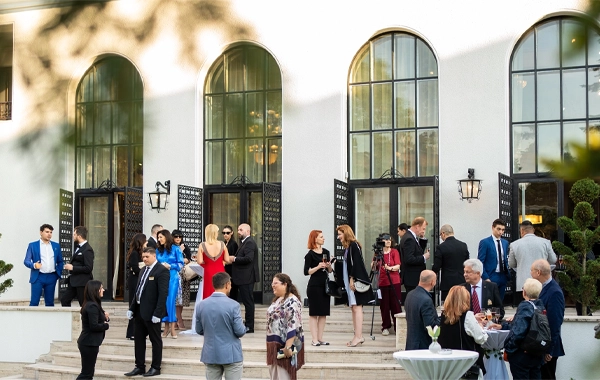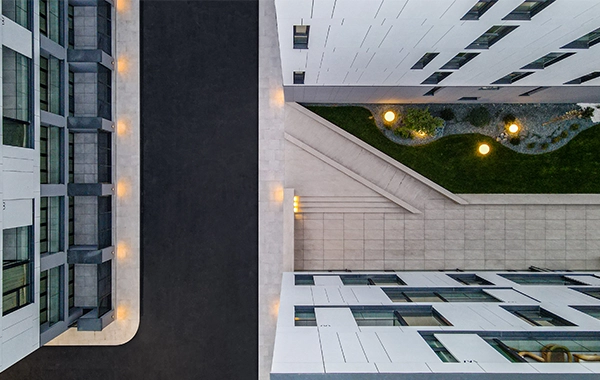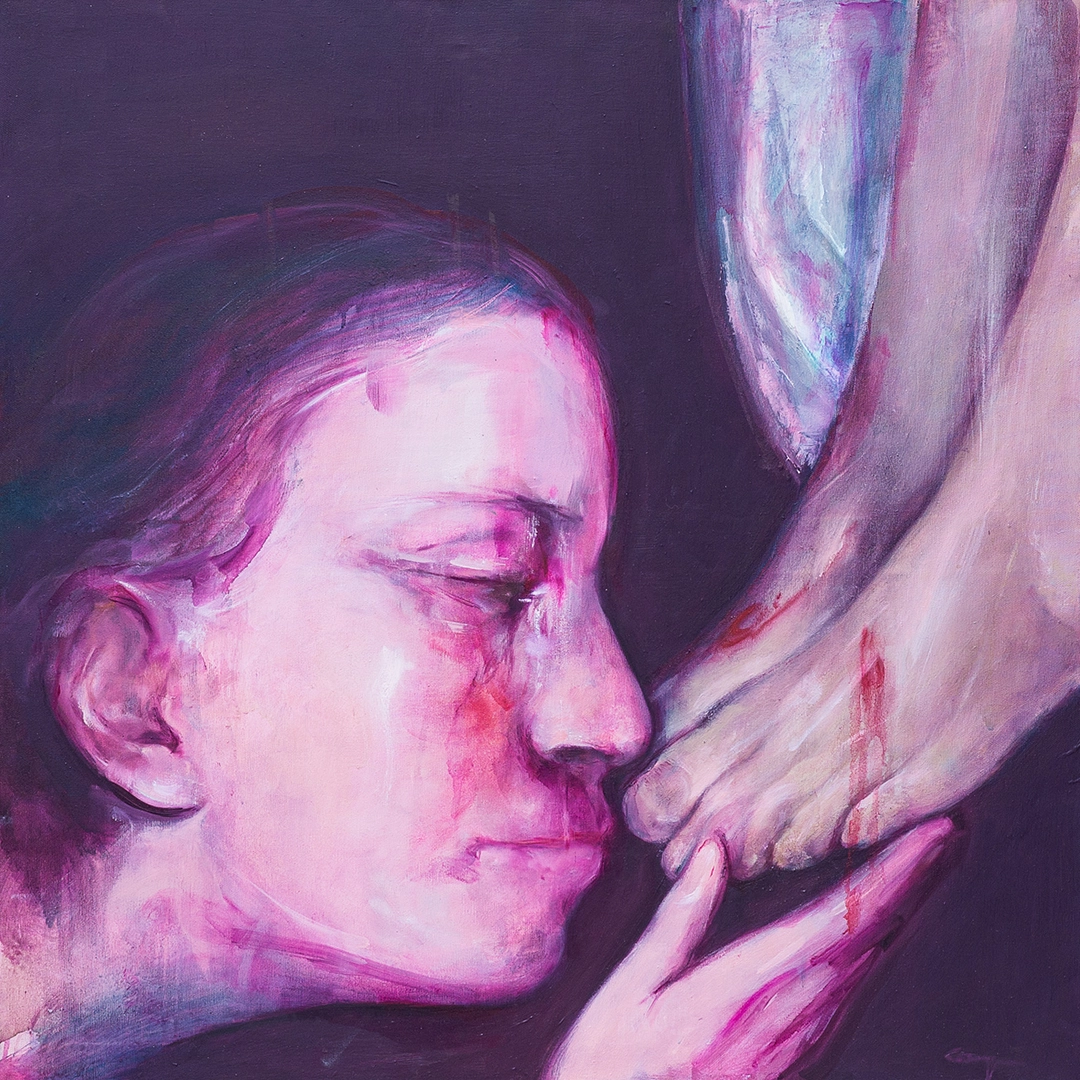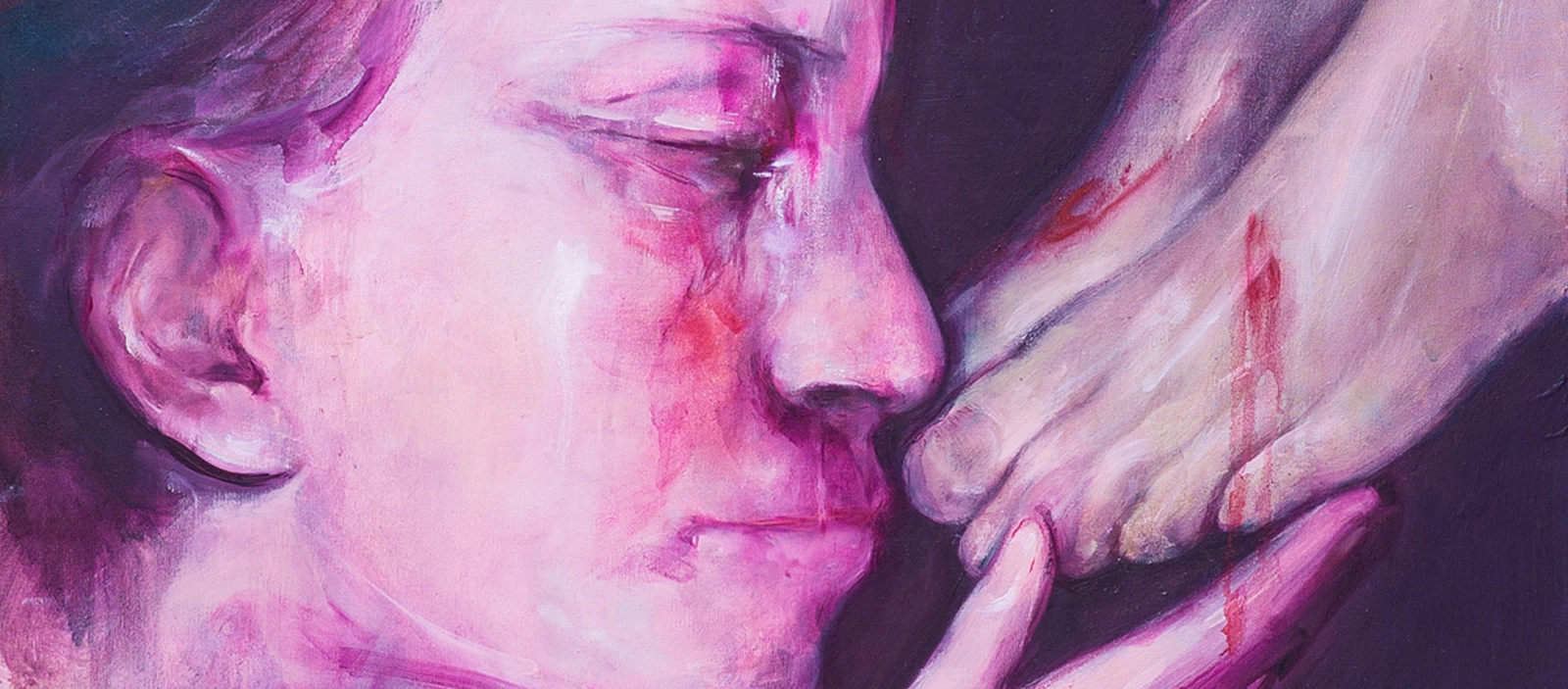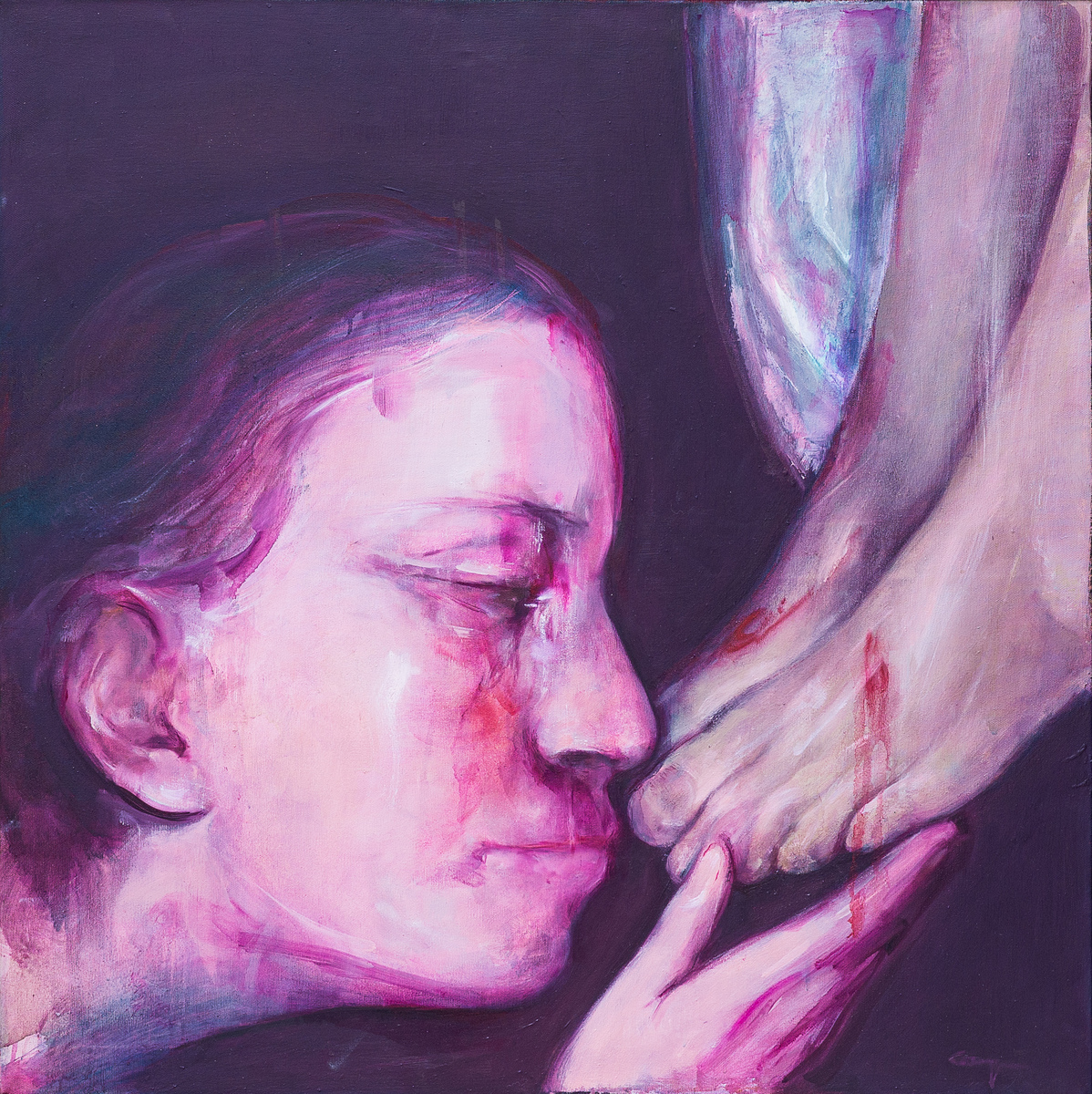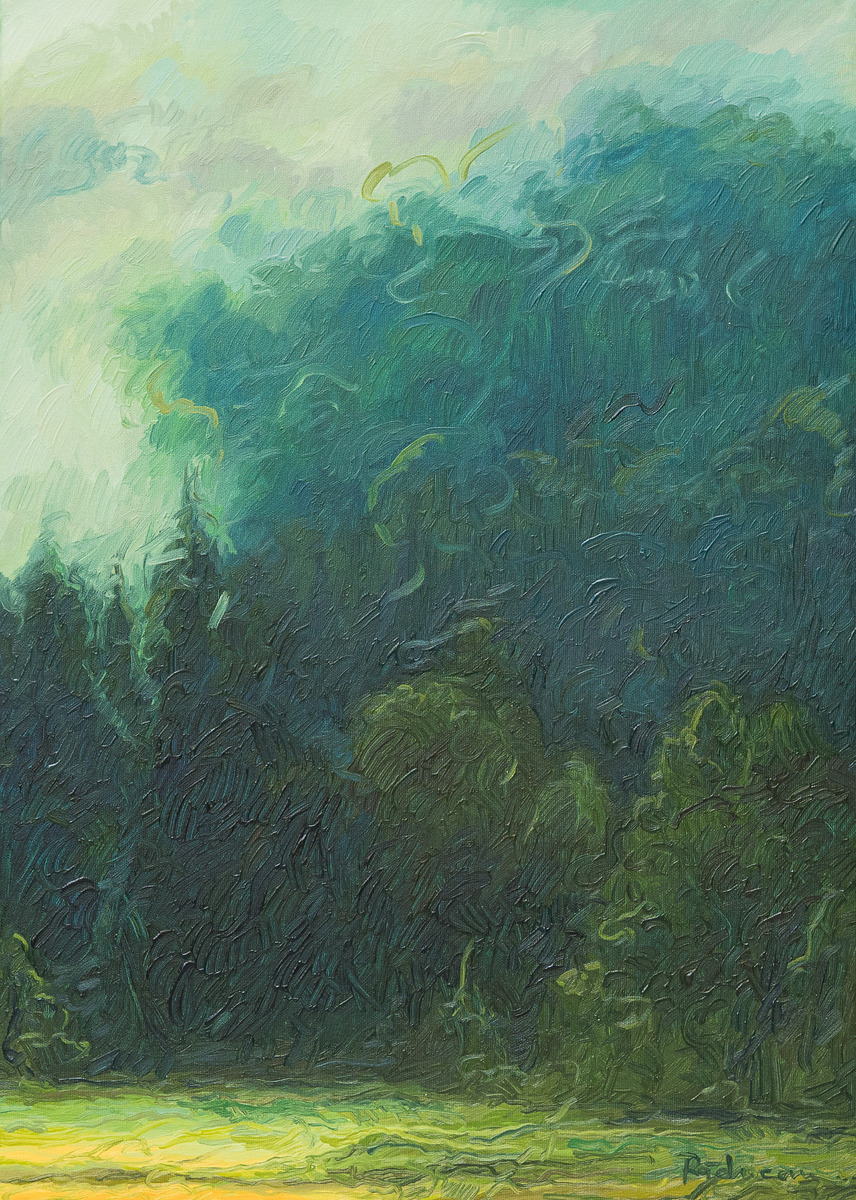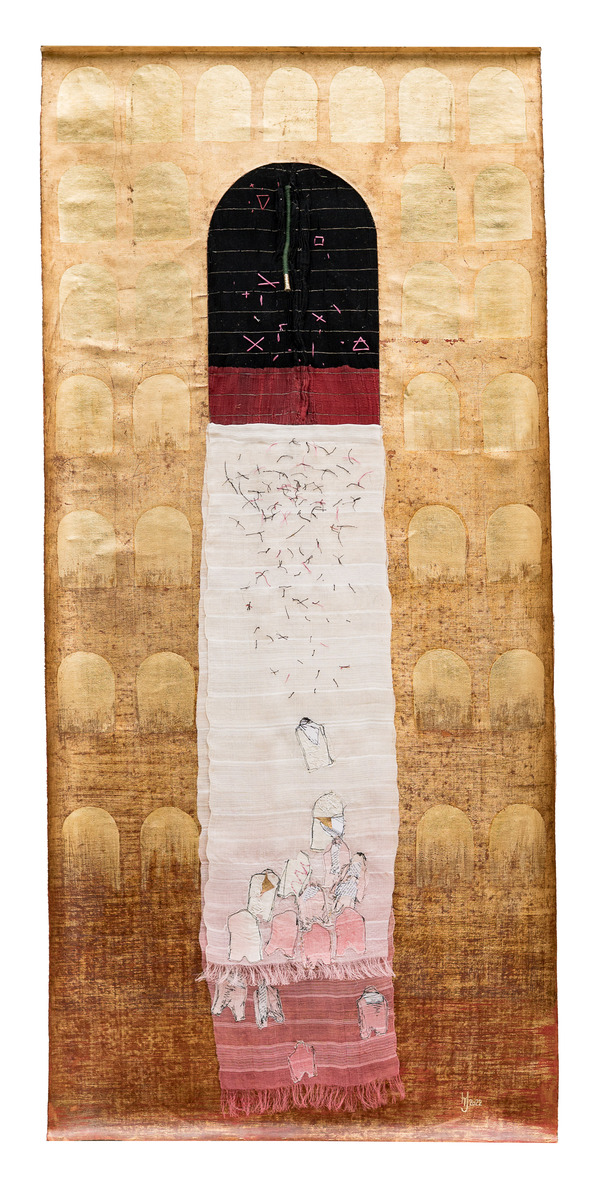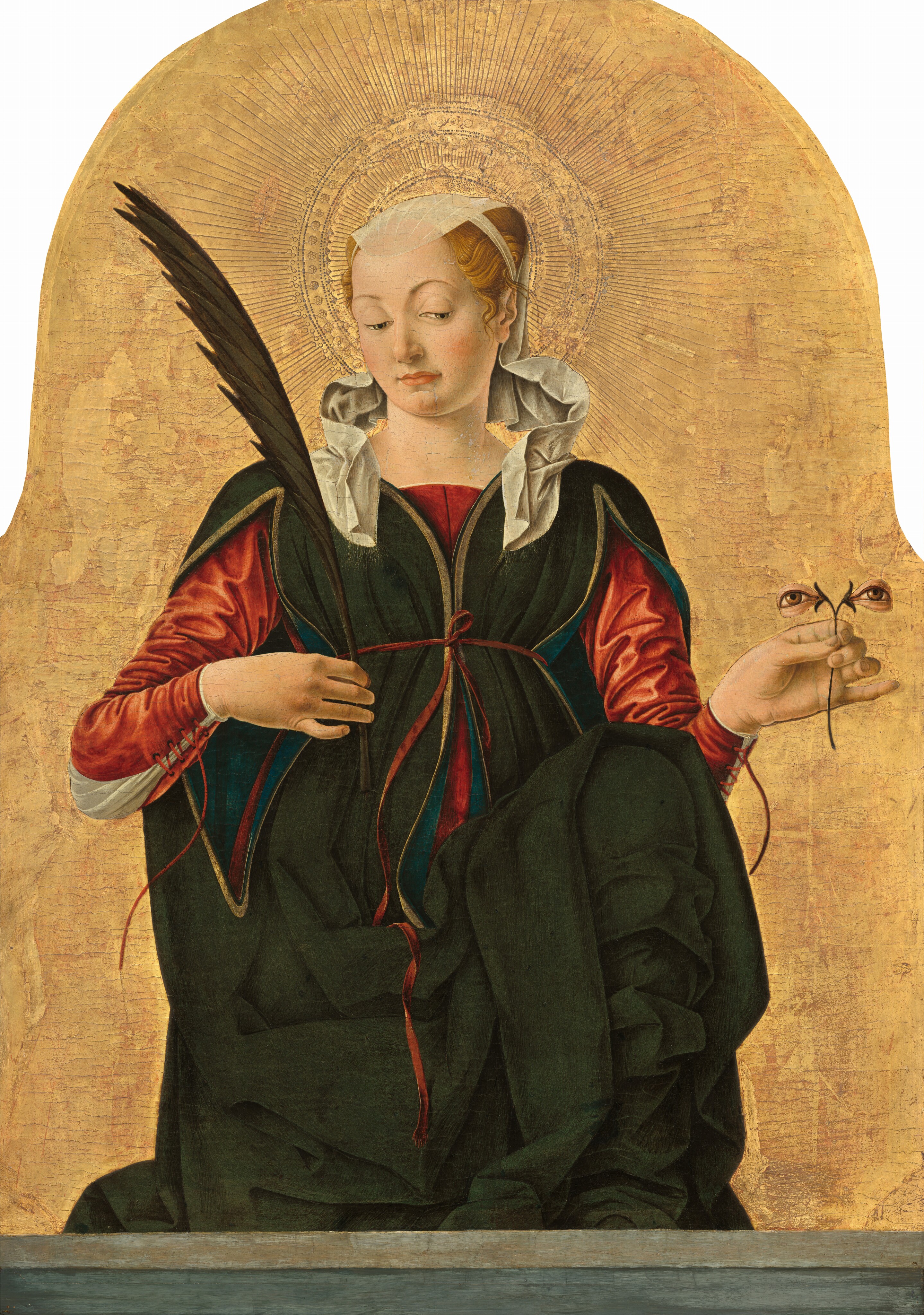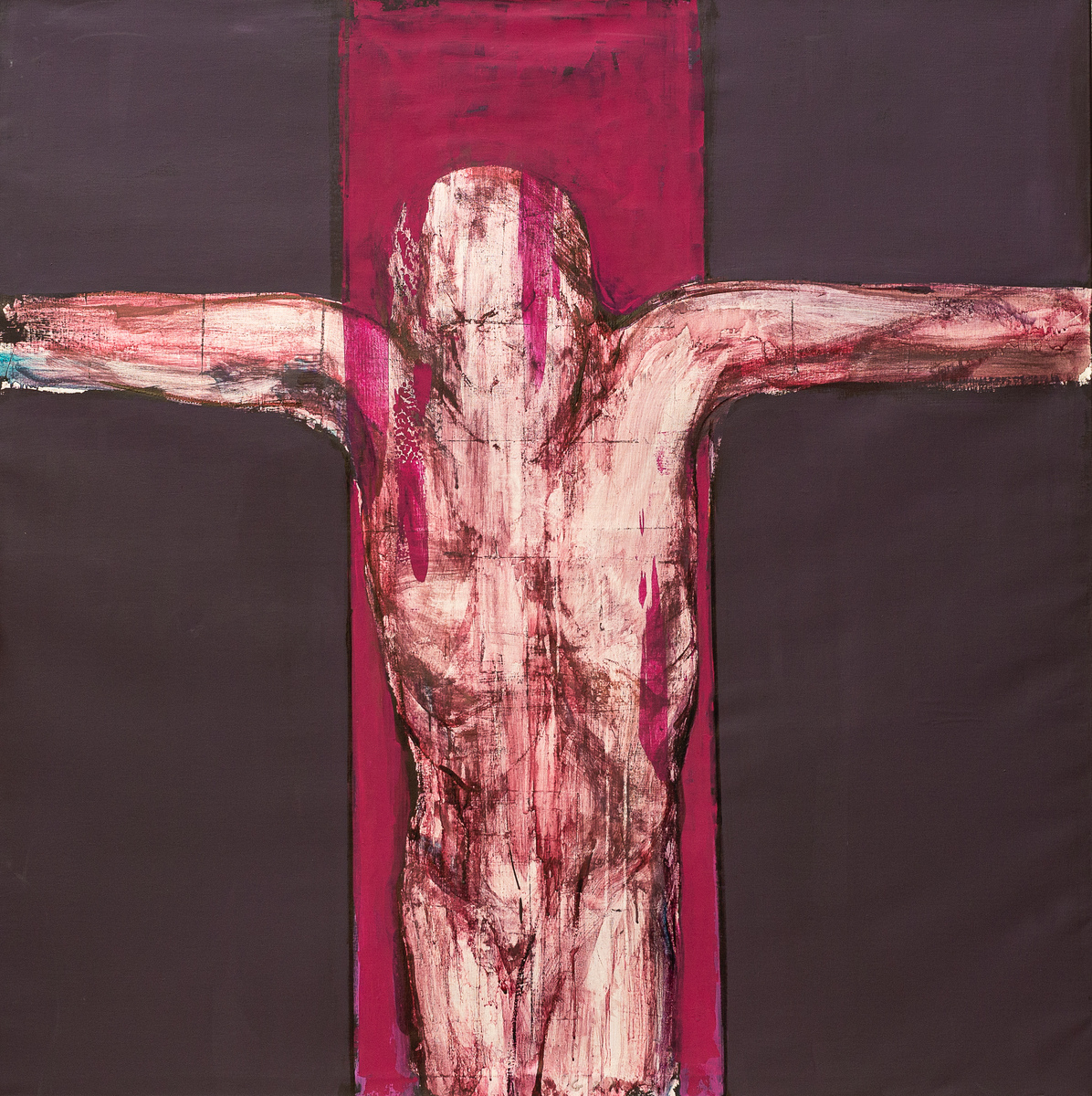The period of waiting that precedes Easter Sunday is always filled with intense energies, bringing to our conscious or unconscious attention the sacred dimension of the world we live in. This condensation that arises at the intersection of the sacred and the profane during these days illustrates, in fact, the symbolic density of the mystery that fascinates us year after year: the mystery of the afterlife, in the Christian key of resurrection.
In this context, one evocative moment is that of Jesus Christ on the cross, with the Virgin Mary at his feet, bearing witness to this terrible scene. In Daniela Grapă’s work, the painting The Kiss 2 portrays this moment with sensitivity, in the rose-toned hues characteristic of her art. Like a mirror image, the Virgin Mary’s kiss upon Jesus’ feet serves to undo Judas’ kiss of betrayal—a gesture that marked Jesus’ presence in the crowd and led to his arrest and ultimately his tragic death. At the same time, by cropping the frame to show only Jesus’ bloodied feet, the painting shifts the focus heavily onto the presence of the Virgin, who is not depicted with her usual features. This choice simplifies the scene and brings its sacredness into a more accessible frame of reference for the “lay viewer.”

